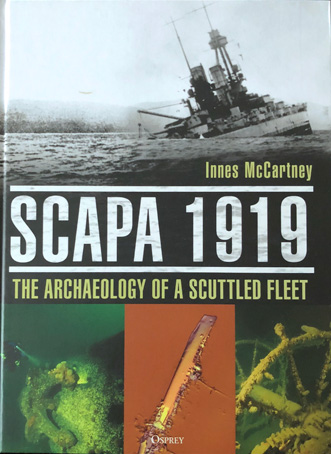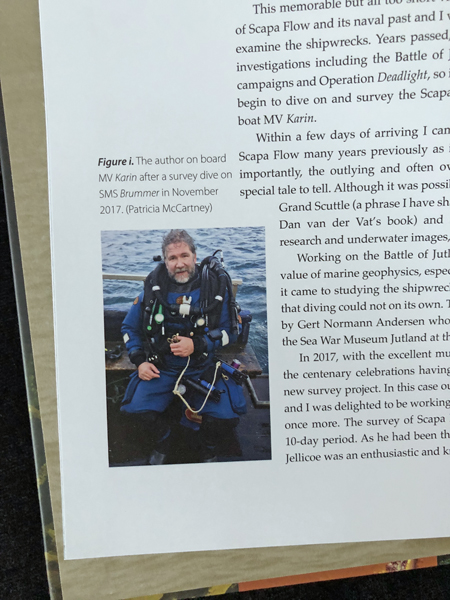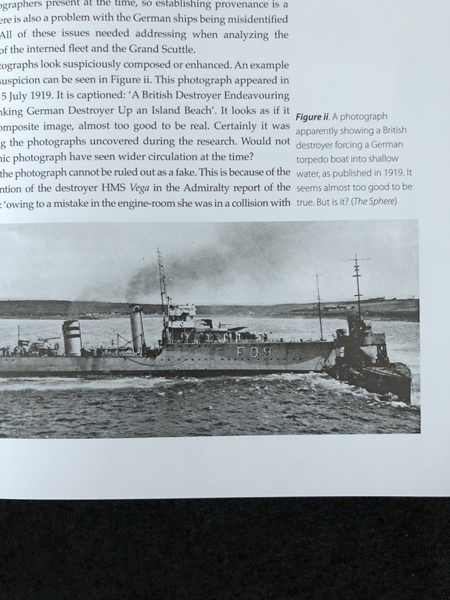 Author: Innes McCartney
Author: Innes McCartney
Published: Osprey Publishing
ISBN: 9781472828903
Available in multiple formats and prices
Hard back, 336 pages, high quality art paper, colour photos of wrecks on diving ops, many black & white period photos, charts and diagrams
Get this impressive title here now at Osprey Publishing
Bookshelf Browse with Geoff Coughlin (June 2019)

Take a browse through this title now
Highly recommended
Geoff C.

Here’s some additional information from the publisher…
The German High Seas Fleet was one of the most powerful naval forces in the world, and had fought the pride of the Royal Navy to a stalemate at the battle of Jutland in 1916. After the armistice was signed, ending fighting in World War I, it surrendered to the British and was interned in Scapa Flow pending the outcome of the Treaty of Versailles. In June 1919, the entire fleet attempted to sink itself in the Flow to prevent it being broken up as war prizes. Of the 74 ships present, 52 sunk and 22 were prevented from doing so by circumstance and British intervention.
Marine archaeologist and historian Dr Innes McCartney reveals for the first time what became of the warships that were scuttled, examining the circumstances behind the loss of each ship and reconciling what was known at the time to what the archaeology is telling us today. This fascinating study reveals a fleet lost for nearly a century beneath the waves.

Biographical note
Dr Innes McCartney is a nautical archaeologist, explorer, historian and author. Over the last 25 years he has specialised in the discovery of, and investigation into, twentieth century shipwrecks including the wrecks of the Battle of Jutland and many British and German submarines. He has appeared regularly on documentaries such as Time Team Special and is a popular speaker at conferences. He lives in Cornwall, UK.
Contents
Preface
Introduction
PART ONE: The Scuttling of the German Fleet
1. Surrender and Internment
2. The Scuttle
3. Reaction and disposal of the rump of the German Fleet
PART TWO: Cox & Danks: The Salvage Pioneers
4. The Salvage of the Battlecruisers and their archaeology today
5. The Salvage of the Destroyers and SMS Bremse and their archaeology today
PART THREE: Metal Industries and Locally based salvage
6. The Salvage of the Battleships and their archaeology today
7. SMS Derfflinger and her archaeology today
8. The Royal Navy
9. Scapa Flow Salvage & Shipbreaking Co.
PART FOUR: The Survivors: Battleships
10. SMS Konig
11. SMS Markgraf
12. SMS Kronprinz
13. SMS Dresden
PART FIVE: The Survivors: Cruisers and Destroyers
14. SMS Coln
15. SMS Karlsrhue
16. SMS Brummer
19. SMS V83 ans SMS S54
PART SIX: Scapa 100 years on
20. Conclusions: The Archaeology of a Scuttled Fleet
Appendices:
1. HMS Vanguard
2. HMS Royal Oak
3. Other Scapa Shipwrecks
Bibliography
Index